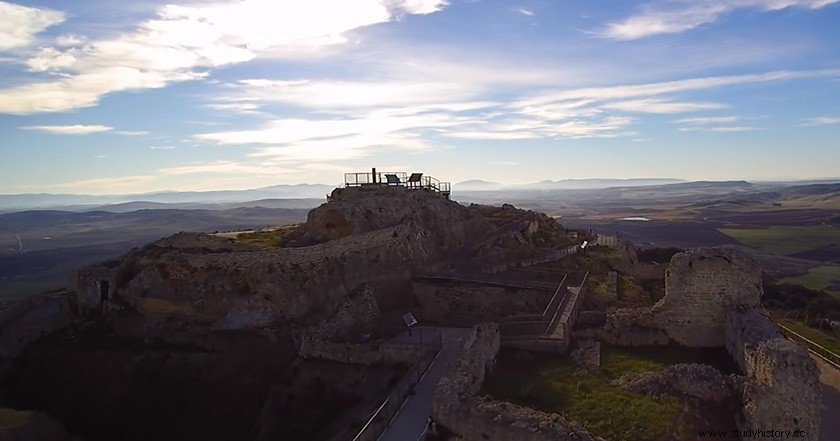
We headed, after knowing Baelo Claudia, again to the province of Cádiz, specifically to the town of Medina Sidonia located in the interior of the province. There we will find the remains of one of the least known constructions of Roman culture, the castellum Romans, which could well have been the prelude to later medieval fortresses.
A bit of history.
It is not entirely clear when the castellum was built of Medina Sidonia , but all the signs point to the tense period of peace after the expulsion of the Carthaginians from the Iberian Peninsula. It is, let us remember that it took place in the year 206 a. C. Since after the great Roman victory in the nearby Battle of Ilipa, the Carthaginians were dismissed from the future Roman Hispania by towns such as nearby Gades.
But Rome, for some reason, did not definitively finish off the Mediterranean rival; despite having support in North Africa, such as the Numidians, and the great victory at Zama (202 BC) that left the Carthaginians completely unarmed and subject to Roman authority.
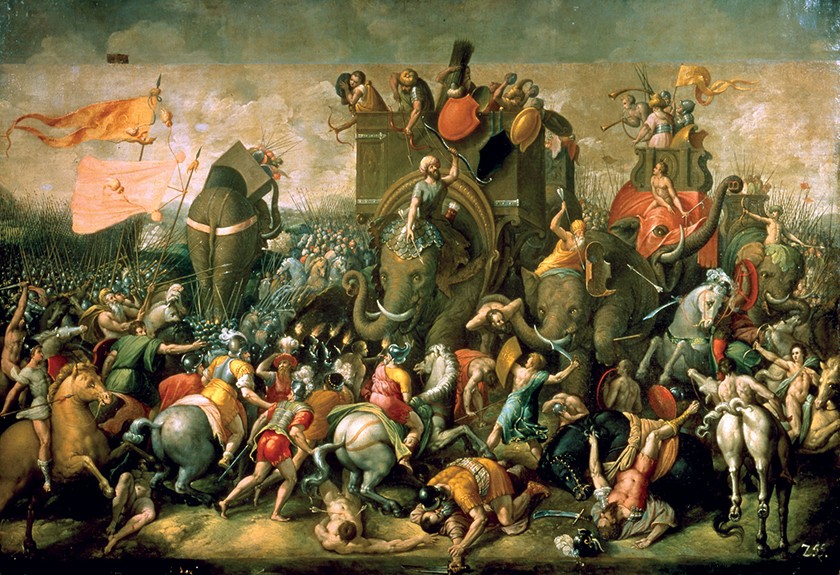
The Battle of Zama (202 BC)
At this point our protagonist today becomes relevant. It is evident that the fear of a possible counterattack must have continued to exist, which is why the hill of Medina Sidonia was a perfect enclave for the construction of this castellum , since, from it on a clear day you can even see Africa, located about 100 km away. The construction process is not known, but behind it there must have been the presence of some Roman detachment in control of the territory.
Half a century later, Rome decided to put an end to Carthage, crushing the old Carthaginian capital and establishing the Roman province of Africa. With control of North Africa and the Celtiberian and Lusitanian wars at a distance, the south of the Roman province of Ulterior became one of the most peaceful places in the Roman Republic. In such a way that in the following decades the cities around the Medina Sidonia square began to grow; the Gades de los Balbo, the fishing village of Baelo Claudia, the enormous and unknown today Asta Regia, or Carteia, the Roman city founded to welcome the first licensed legionnaires. There, the castellum of Medina Sidonia, was left without its defensive function. but exercising to escape from the power of Rome before the ancient Punic-Turdetan peoples.
Later, in the times of the Lower Empire, it was able to resume this defensive function, the discovery during one of its archaeological campaigns of a Scorpio-type catapult suggests this. These were used to launch arrows of a size between 70-90 cm, which with great precision could pierce armor at a distance of about 500 m. The crisis of the third century, with the arrival of North African and German pirates, could be behind this reuse of space with defensive properties.
From the 5th century AD. C., our protagonist will end up being a silent witness of the important events that happened in the south of the Peninsula:among them the passage of the Vandals to Africa, or their occupation first by the Byzantines and later by the Visigoths, there have been signs that these The latter had to repair the battered wall. Finally, already in medieval times the castellum it had to withstand the arrival of the Muslims, who stormed the castle to seize it from the Visigoths before ending their kingdom at the beginning of the 8th century.
The castellum of Medina Sidonia.
Few archaeological remains have survived from this castellum . You have to think that a Muslim fortress was later built on it, possibly Almoravid, and finally the fifteenth century medieval castle, promoted by the lords of the House of Medina Sidonia. The latter was even larger than the Roman, and with the appropriate defenses against artillery. Due to these constructions we do not know the rooms inside, although they were probably made with perishable materials.
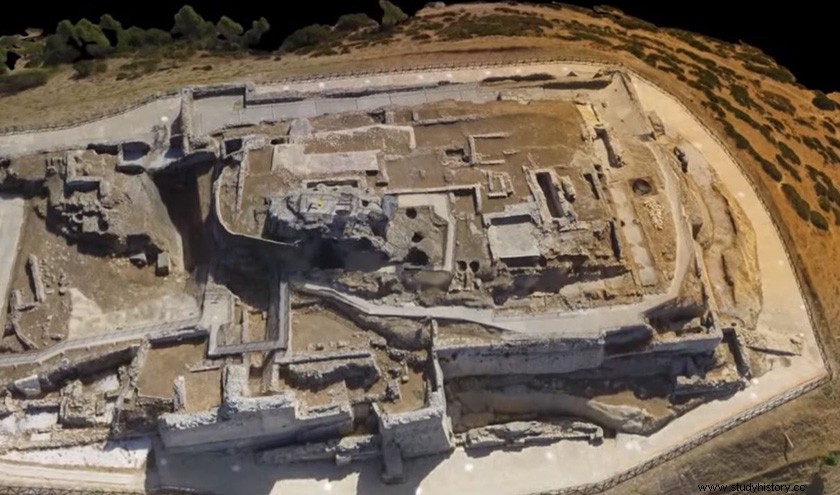
The castellum of Medina Sidonia from the air
Based on the remains found, we can think that it was more than 10,000 m2, it was surrounded by a wall, which in some areas could have been 4 meters high and 1.30 m wide. width. Perfectly cut ashlars were placed on the outside, while the inside was filled with opus caementicium , that is, a type of mortar mixed with different residues, which gave an appearance similar to current concrete. Around the perimeter there were at least two hollow defensive towers, that is, they could have been used to access the upper part of the wall, and it was also reinforced with different buttresses to increase its resistance. To conclude, it had an exterior moat, which, due to its location, forced its builders to dig it directly into the rock, in some areas it was more than 7 m deep.
There are many questions raised by a construction like this, practically unique in the Iberian Peninsula, although recent news speaks of another similar one in the province of Alicante. As is known, Roman culture developed another type of defensive construction, which was installed in the flattest areas, or on small promontories, evidently speaking of the Castrum Roman. Authentic legionary camps that this culture spread throughout the Empire. Hence, when observing and knowing this unique construction, the pre-Roman constructions that were especially found to reach lands dominated by the Iberians come to mind. Whether or not they copied it for its construction in Medina Sidonia is unknown.
I leave you with some images taken on my last visit.

The medieval wall, today an access ramp to the interior of castellum
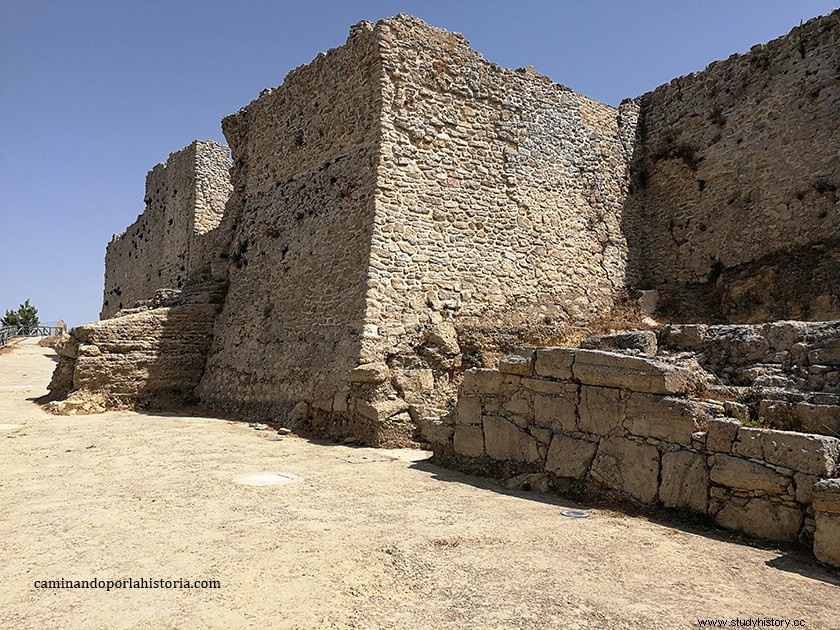
One of the medieval towers, under the same remains of the Roman wall
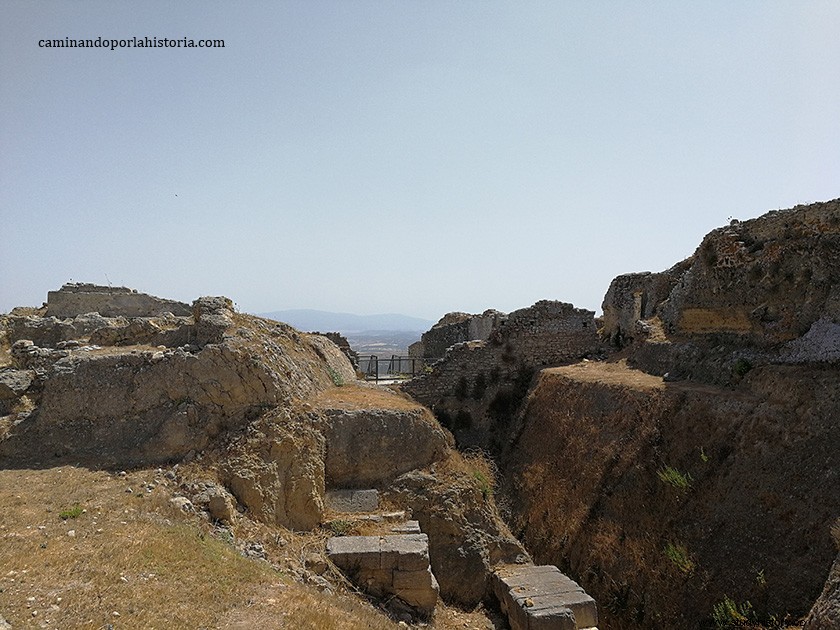
Remains of the ancient Roman moat used in the Middle Ages as a cistern
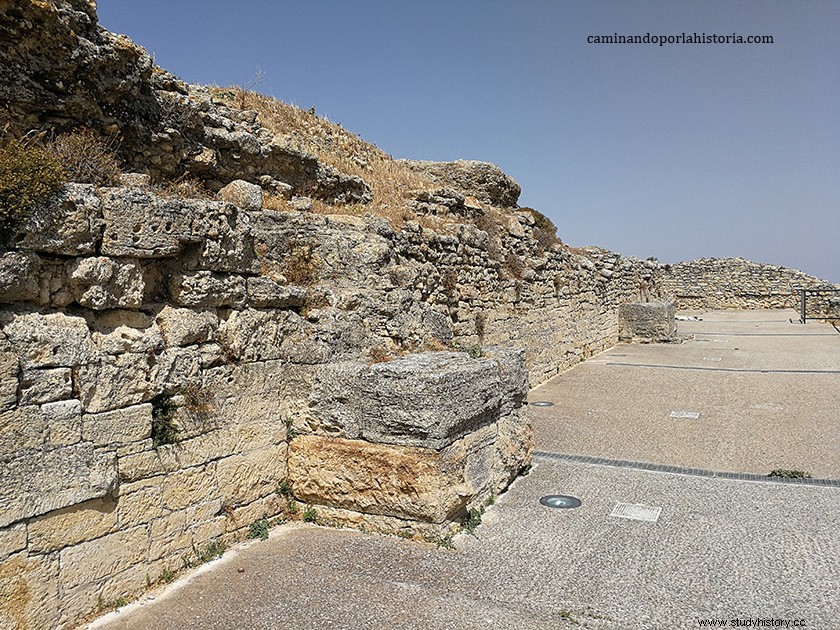
Remains of superimposed walls, in this case Roman and Arab
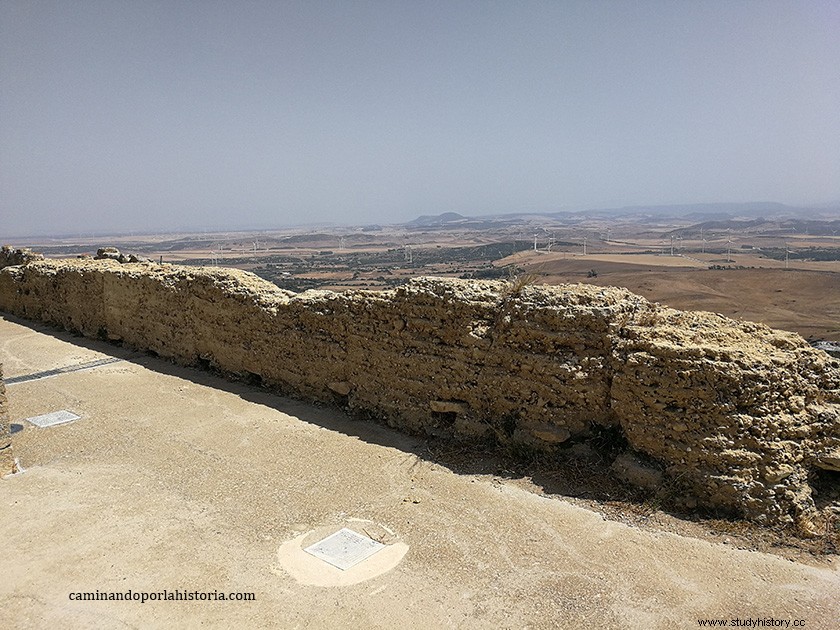
The views from the hill of Medina Sidonia, key in the protection of the southern peninsula
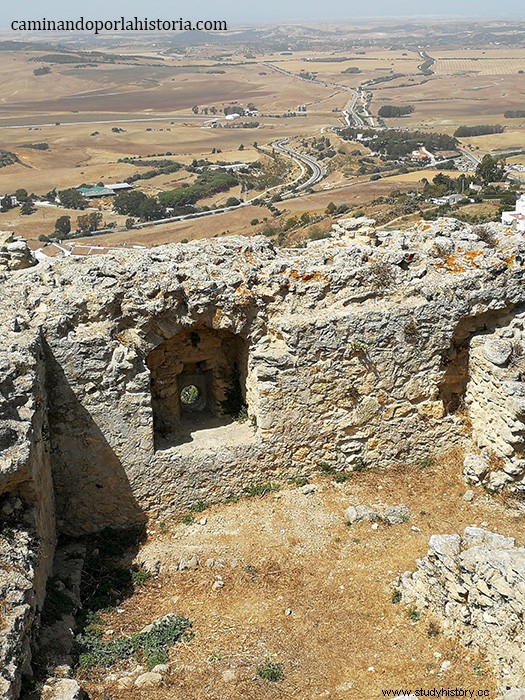
Embrasure of the medieval castle of Medina Sidonia.
More info:
turismomedinasidonia
